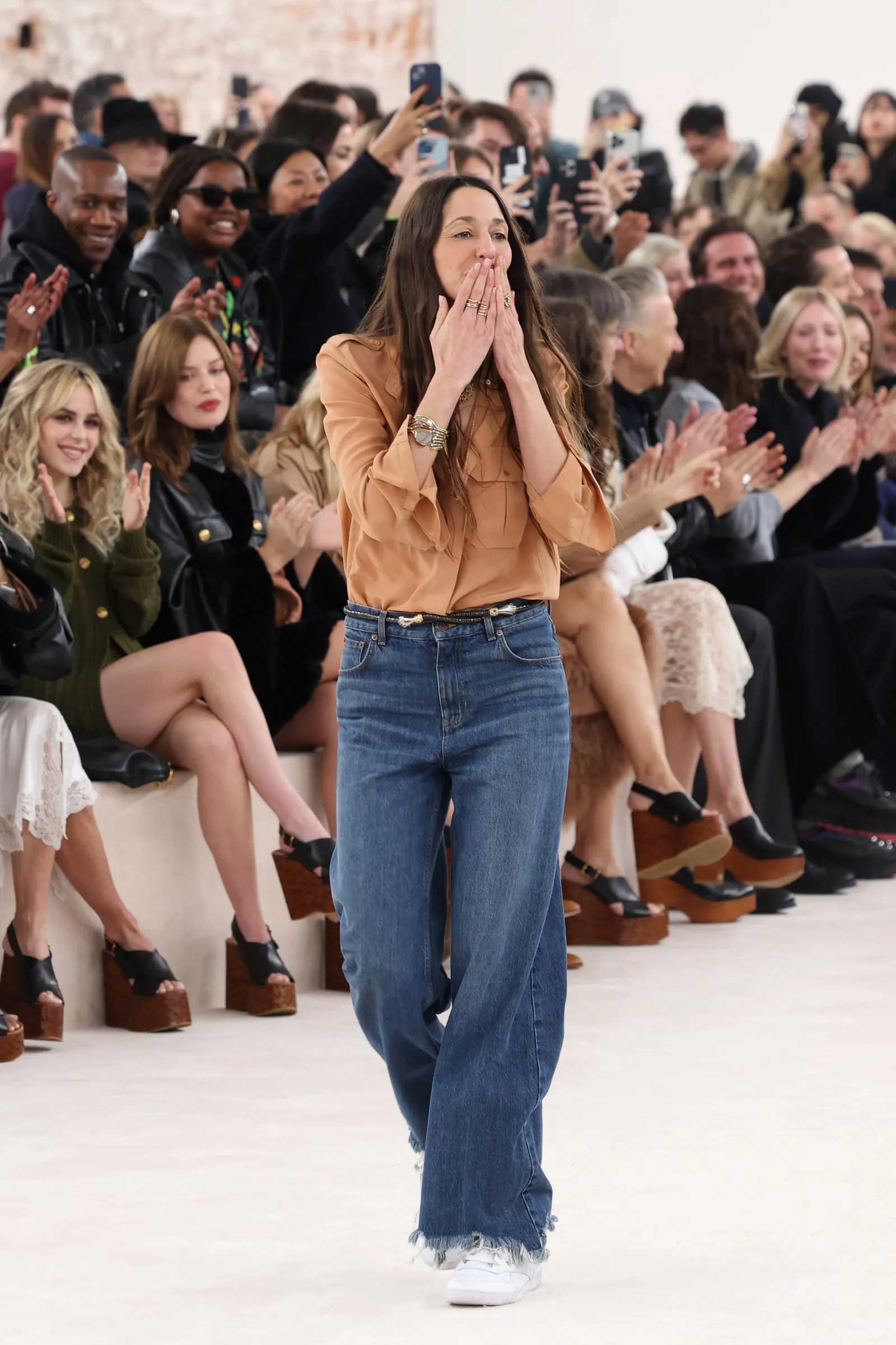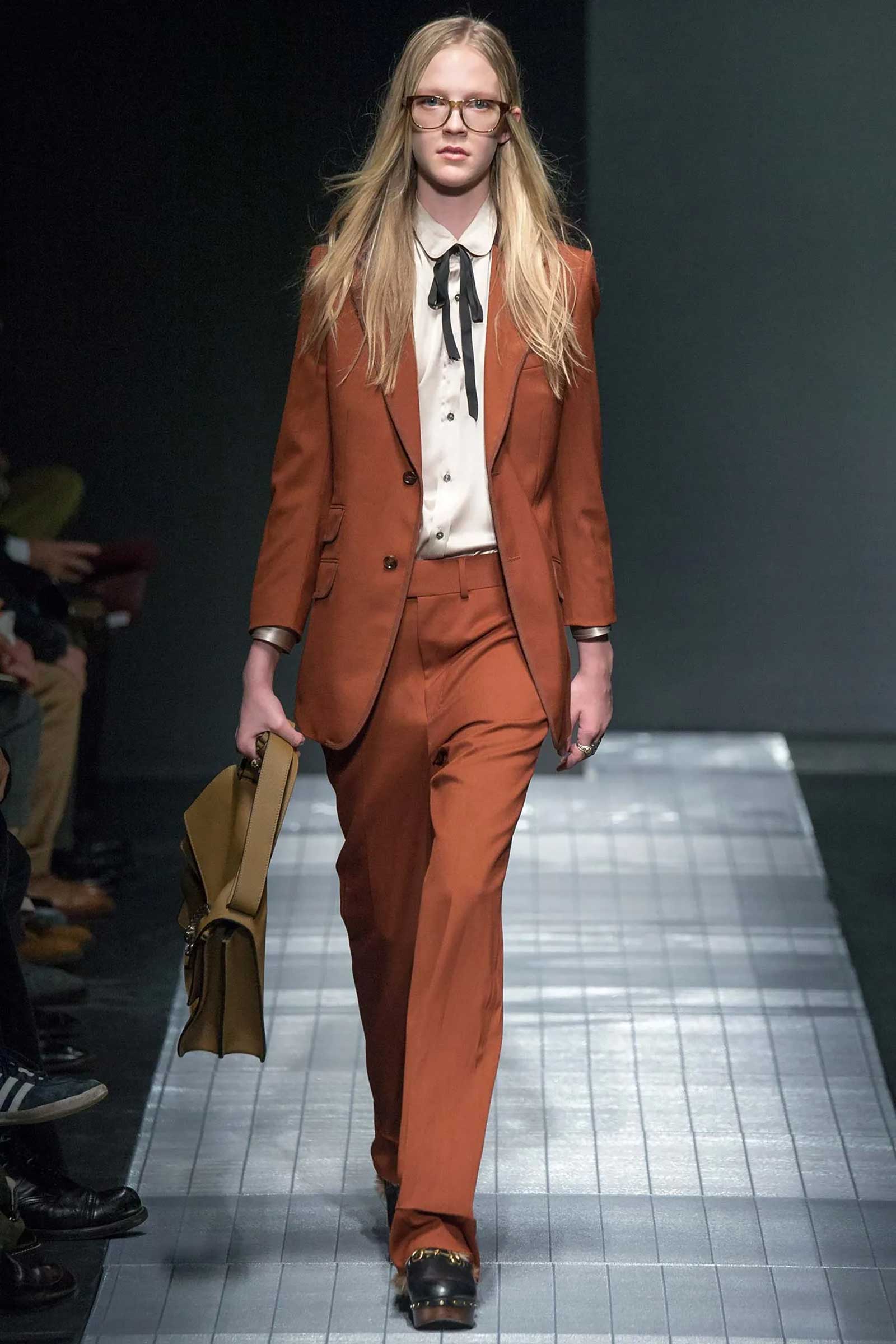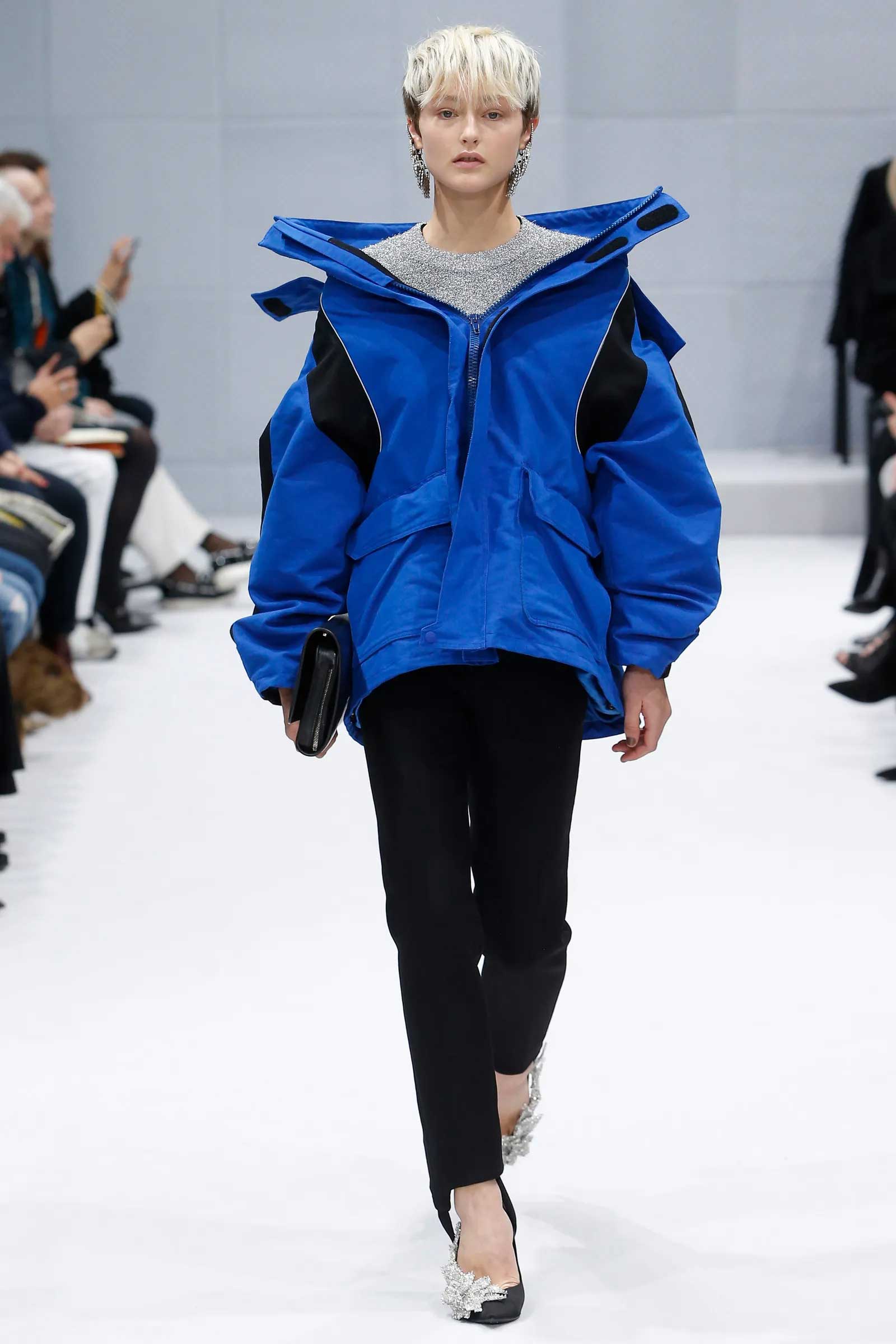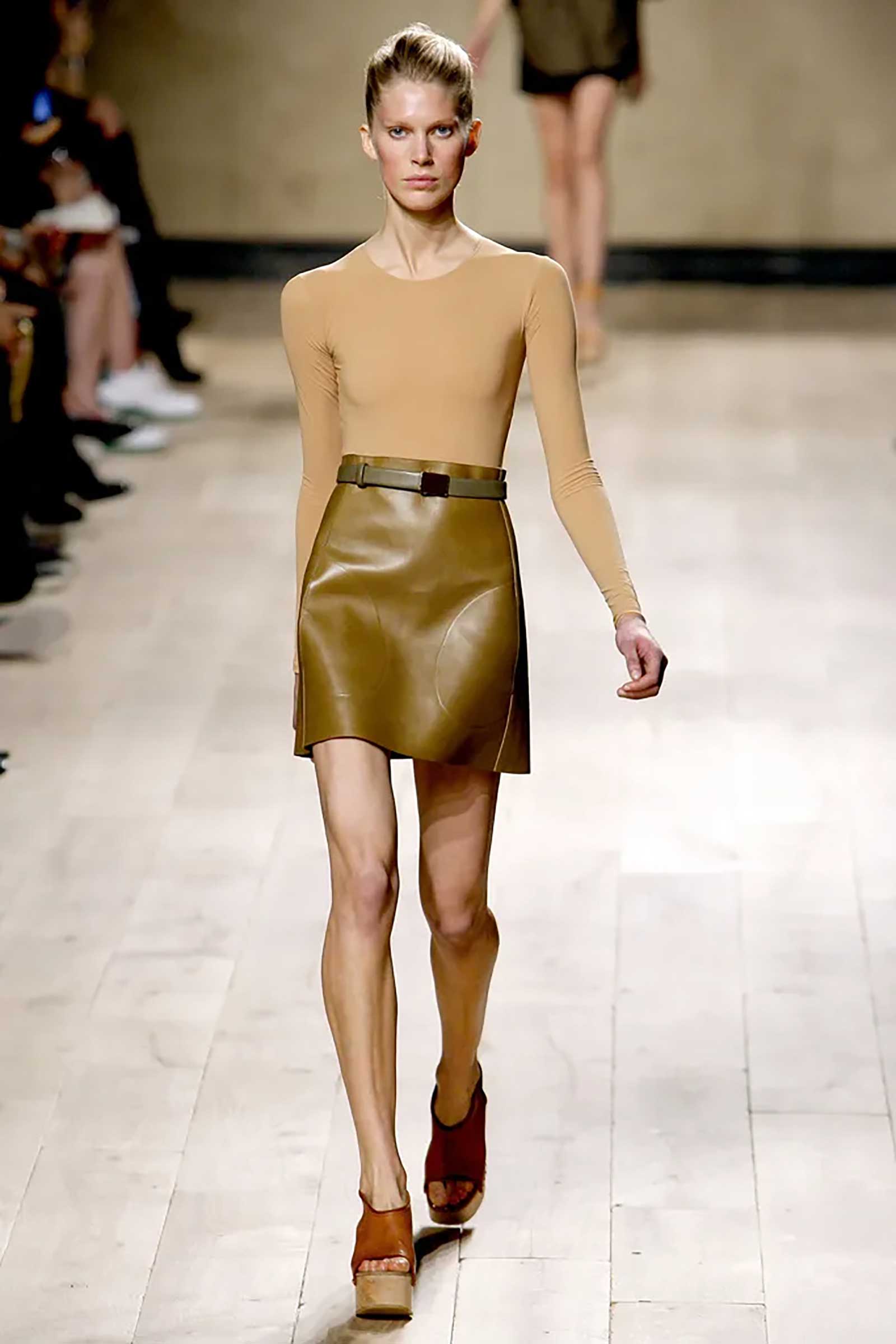Some of the protagonists of fashion’s current vibe shift: a new McQueen by Seán McGirr, Valentino’s newly-named creative director Alessandro Michele, Chemena Kamali’s boho renaissance at Chloé. Photos: Alexander McQueen, Courtesy of Alexander McQueen; Michele, Darren Gerrish/BFC/Getty Images; Chloé, Carlo Scarpato / Gorunway.com; Spiral Galaxy, Fox Photos/Hulton Archive/Getty Images
Phoebe Philo said of her vibe-shifting vision for Céline’s spring 2010 collection: “I just thought I’d clean it up. Make it strong and powerful—a kind of contemporary minimalism.” Monica Feudi / GoRunway.com
With almost a dozen new names and positions announced since 2023, the fashion industry could become a site of new and progressive ideas—if we let it.
One of the crucial truths about fashion is that it’s constantly moving forward. Its present is never the actual present but rather an idea of what the present might look like six months into the future. What anchors the constant cycle of newness is that its main characters, among them many of the creative directors at Europe’s heritage labels, are often in place for long periods. Since 2023, however, the industry has experienced massive turnover, with new creative directors being named—or about to be named—at more than 10 labels, including Alessandro Michele at Valentino, Seán McGirr at Alexander McQueen, Chemena Kamali at Chloé, Sabato de Sarno at Gucci, Pharrell Williams at Louis Vuitton men’s, Peter Hawkings at Tom Ford, and Adrian Appiolaza at Moschino. A successor has yet to be named for Bruno Sialelli at Lanvin, and Matthew M. Williams at Givenchy, whose departures from their respective labels were confirmed last year. Perhaps the most surprising news of the year so far was Dries Van Noten’s announcement that he would be exiting the label he founded in 1986, with a replacement to be named later this year. The industry reacted with heartfelt tributes to a man who, for almost 40 years, helped build the wardrobes of proudly independent women who held secretly romantic notions about dressing. The writing is on the wall—we’re entering a fashion vibe shift.
Creative-director positions at big labels can sometimes seem to be nothing more than a game of musical chairs, in which a title at one place is exchanged for a title at another—and indeed that was the case for Michele, who enjoyed a two-year break full of speculation before his new job was announced. But this latest round of appointments consists almost completely of designers emerging from behind-the-scenes positions. (Williams, the world-famous multihyphenate celebrity designer, is the exception.)



Looking back at the last century, we can identify these fashion vibe shifts—a term coined in 2022 by Sean Monahan, a trend forecaster—as special moments where the view of a designer or a group of designers aligns perfectly with the preoccupations of society and culture at large. Think Mary Quant’s miniskirts and hot pants in the 1960s as young people rebelled against the status quo or Claude Montana’s power suits as women entered the workforce en masse in the 1980s. The industry last experienced such a change almost a decade ago, when Michele showed his first Gucci collection for the fall 2015 menswear season, followed by Demna’s debut at Balenciaga the following year. Both designers were relative unknowns at the time. Michele had spent 13 years at the Italian brand, working his way up to become head of accessories, when he was famously asked to put together a menswear collection in five days after Gucci’s creative director, Frida Giannini, departed her post earlier than planned. The resulting collection of silk pussy-bow blouses and fur-lined mules, modeled by androgynous-looking men with long hair, kicked off the trend of genderless fashion that became one of the defining characteristics of 2010s style. Demna—who back then went by his full name, Demna Gvasalia—was the leader of a collective of designers responsible for Vetements, whose conceptual rethinking of everyday garments and dramatic silhouettes sent a jolt of electricity throughout the industry. Vetements had three collections to its name when Kering tapped the designer and both legitimized and amplified his anarchic point of view. Demna added new words like pantaboots to our vocabulary, a neverending supply of ironic logos emblazoned across clothes and accessories, and the idea that a jacket can never be too oversized nor its shoulders too wide.
Looking back, we can describe the moment as the beginning of an auteur era, where new ideas introduced by outsiders completely changed the way people—all people, beyond the fashion cognoscenti—dressed, as their clothes made their way not only to mass retail stores but also became embedded in the identity politics of our time. Most importantly, they opened up the discussion about the meaning of clothes themselves, exploding gender and class signifiers as a way to break with society’s expectations.



But this shift is not always dependent on an unknown designer ascending to a creative position of power. Recall in 2010 when Phoebe Philo presented her first proper Céline collection. With its cleaned-up contemporary minimalism, it marked a major pivot from the bohemian-inspired femininity she conjured while she was the creative director at Chloé in the early 2000s. It’s that same femininity that Kamali returned to with her debut collection at the French label last month, which was gleefully received by young millennials and old Gen Z’ers who have been eagerly awaiting the return of a look that defined their adolescence. It remains to be seen whether Michele’s new vision at Valentino will build upon his previous body of work or if he will excavate the meaning of Valentino-ness to find commonalities between his sensibilities and those of the great Valentino Garavani. Philo herself is also one of the main characters in this current shift, as we watch her attempt to disengage with the industry’s everlasting desire for more, more, more in real time with her freshly founded namesake label.
Together with the realization that the commercial bedrocks that support the industry (i.e. department stores and their online counterparts) aren’t as stable as we once thought and the increasing urgency to address sustainability issues that once seemed like nice-to-haves, all these personnel changes are giving way to the notion that the future of the industry is suddenly wide open. After all, it wasn’t fashion alone that brought conversations about gender and sexuality to the forefront in the last decade, but it certainly gave some people a good place to start. Designers are now in a place to redefine not only how we dress (the fun part) but how we can live better, more honest lives by really making it their focus to engage in environmentally and socially friendly business practices throughout the supply chain. It’s not just about working with organic or recycled materials or being careful about carbon footprints; it’s also about making sure that the people involved in the process at every step are not being taken advantage of and are paid fair wages (the serious part). It remains to be seen where this new era of fashion will take us, but for now let us ride the vibe-shift wave.
This story first appeared on Vogue.com.
